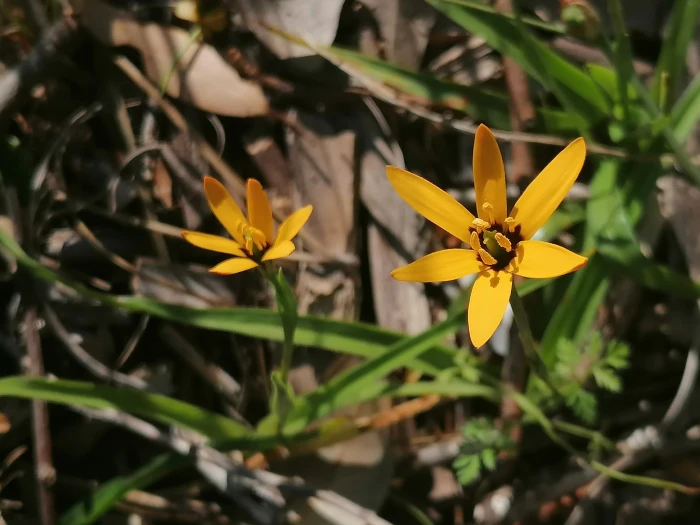Beetle Lily
(Baeometra uniflora)
Beetle Lily (Baeometra uniflora)
/
/

flamelily
Public Domain
Image By:
flamelily
Recorded By:
Copyright:
Public Domain
Copyright Notice:
Photo by: flamelily | License Type: Public Domain | License URL: http://creativecommons.org/publicdomain/zero/1.0/ | Rights Holder: flamelily | Publisher: iNaturalist | Date Created: 2021-10-19T17:36:58-07:00 |






















































Estimated Native Range
Climate Requirements for Cary, North Carolina
| This Plant | Your Site | Plant Suitability for Your Location | ||
|---|---|---|---|---|
| • Precipitation | 14" - 40" | 45" | Aquatic | Aquatic |
| • High Temp. | 73°F - 92°F | 90°F | Your summer temperatures are normal for this plant. | Excellent |
| • Low Temp. | 38°F - 50°F | 30°F | Your winter temperatures may be too cold for this plant | Too cold |
This plant may not grow well at your location - your precipitation is too high.
Summary
Baeometra uniflora, commonly known as Beetle Lily, is a deciduous perennial bulb native to the winter rainfall region of the Western Cape in South Africa, particularly in the fynbos and renosterveld vegetation types. This region is characterized by Mediterranean-type climate with wet winters and dry summers. The plant typically has a single stem that bears two or more yellowish-green to orange flowers, which bloom from late winter to early spring. The flowers are cup-shaped with six tepals and are quite showy, attracting various pollinators. Despite its common name suggesting a single flower, the species often produces multiple blooms.
Beetle Lily is valued for its unique, attractive flowers and is used in rock gardens, as a container plant, or in naturalized bulb fields. It requires well-drained soil, preferably sandy, and thrives with minimal water once established, making it suitable for xeriscaping. It is not commonly found in cultivation but can be grown by enthusiasts who appreciate its unusual appearance and adaptability to dry conditions. However, gardeners should handle it with care due to its toxic nature, as it contains the alkaloid colchicine, which is poisonous if ingested.CC BY-SA 4.0
Beetle Lily is valued for its unique, attractive flowers and is used in rock gardens, as a container plant, or in naturalized bulb fields. It requires well-drained soil, preferably sandy, and thrives with minimal water once established, making it suitable for xeriscaping. It is not commonly found in cultivation but can be grown by enthusiasts who appreciate its unusual appearance and adaptability to dry conditions. However, gardeners should handle it with care due to its toxic nature, as it contains the alkaloid colchicine, which is poisonous if ingested.CC BY-SA 4.0
Plant Description
- Plant Type: Bulb
- Height: 0.8-1 feet
- Width: 0.4-0.8 feet
- Growth Rate: Moderate
- Flower Color: Yellow
- Flowering Season: Summer, Fall
- Leaf Retention: Deciduous
Growth Requirements
- Sun: Full Sun
- Water: Low, Medium
- Drainage: Slow, Medium
Common Uses
Low Maintenance, Rock Garden, Showy Flowers
Natural Habitat
Native to the winter rainfall region of the Western Cape in South Africa, particularly in fynbos and renosterveld vegetation types
Other Names
Common Names:
Scientific Names: Baeometra uniflora, Baeometra columellaris, Baeometra breyniana, Epionix flava, Epionix rubra, Kolbea uniflora, Melanthium aethiopicum, Melanthium flavum, Melanthium uniflorum
GBIF Accepted Name: Baeometra uniflora (Jacq.) G.J.Lewis